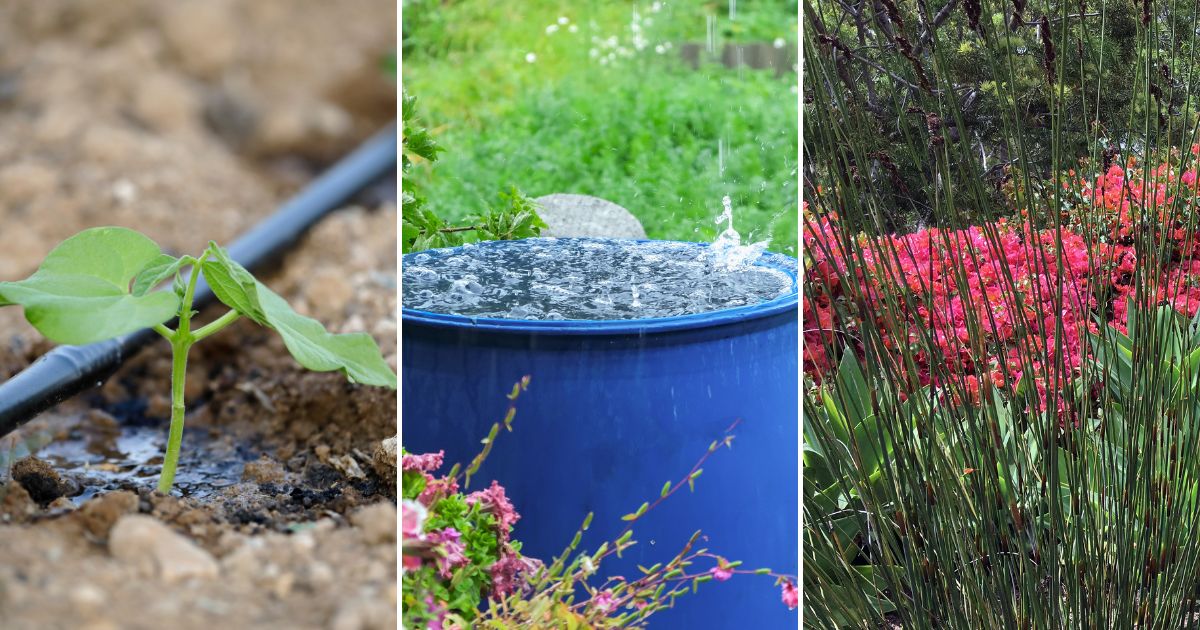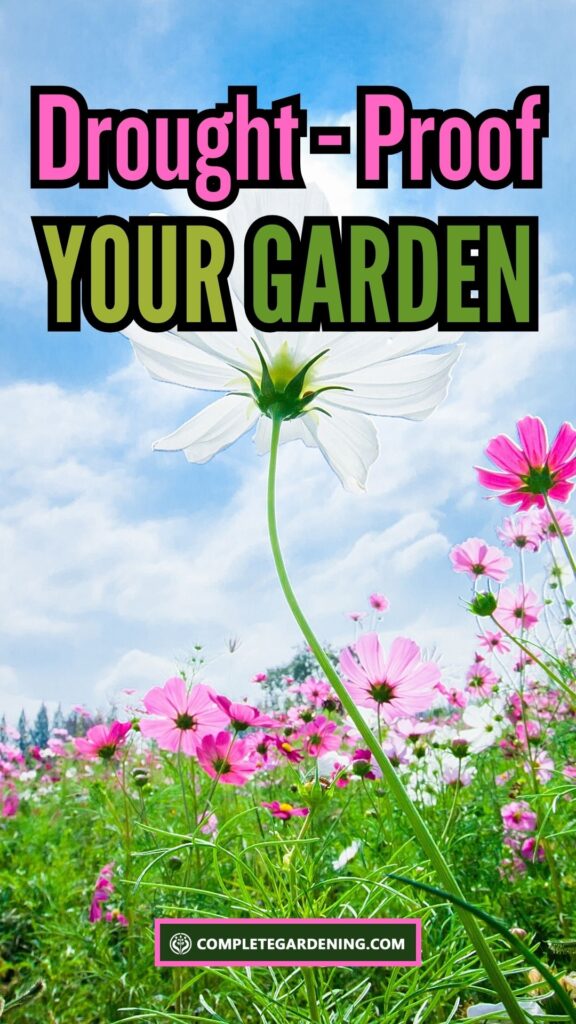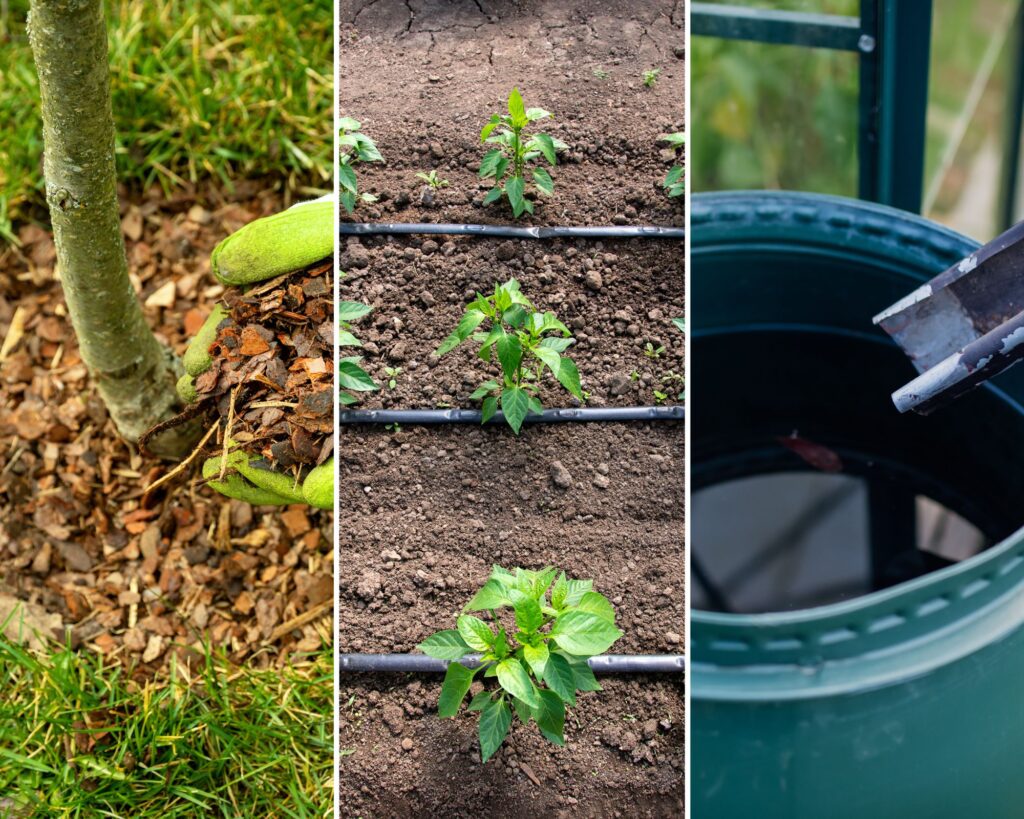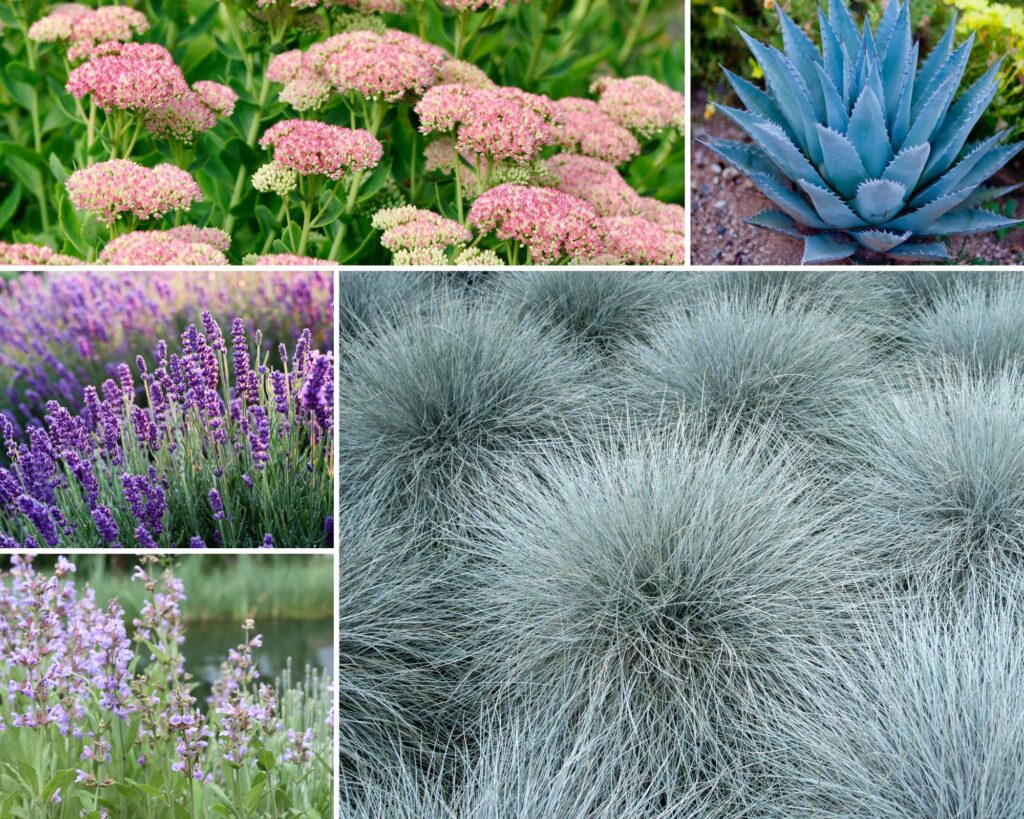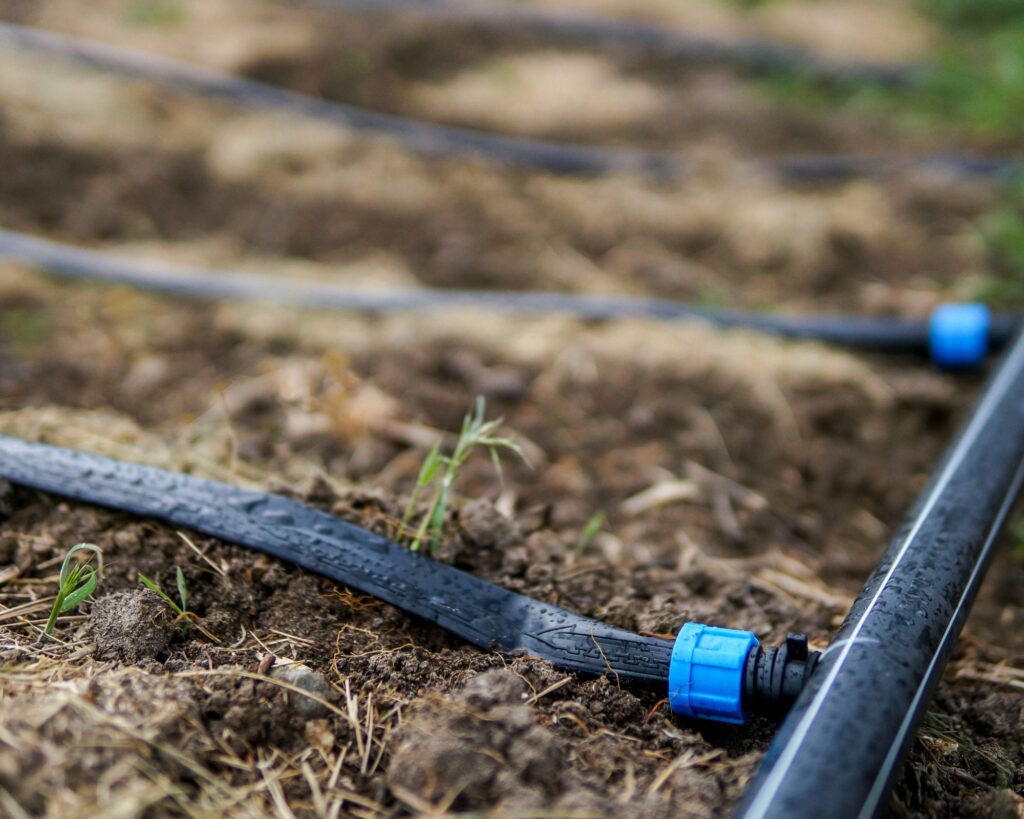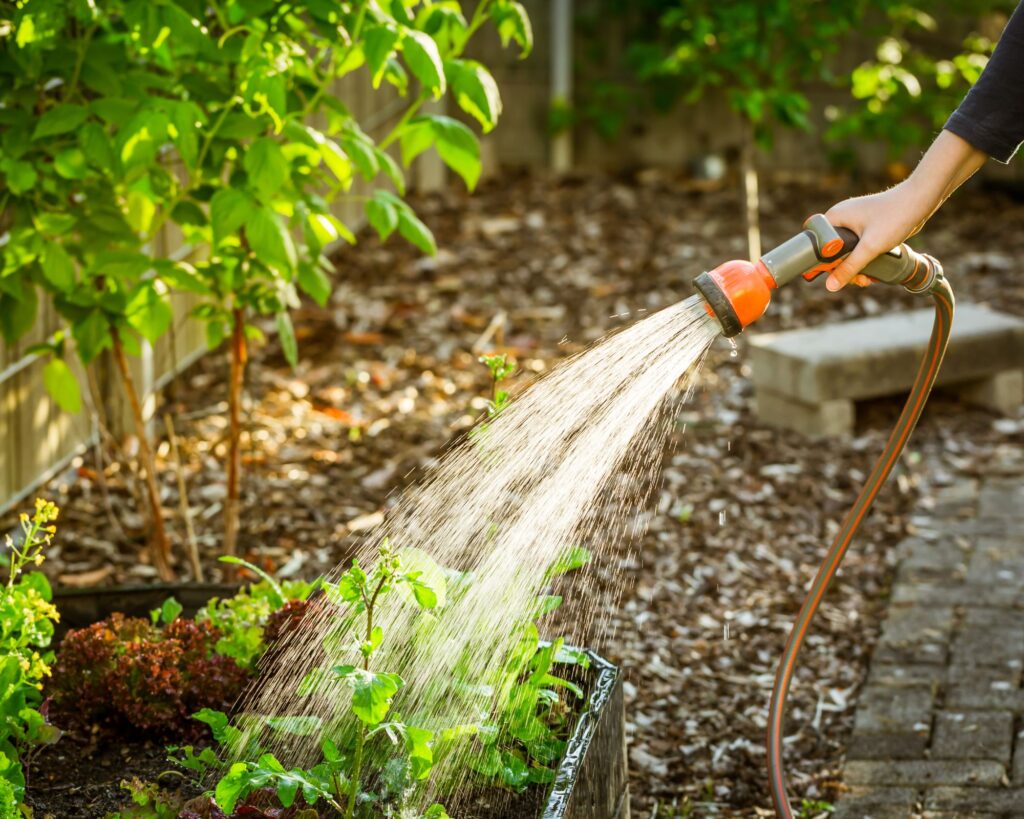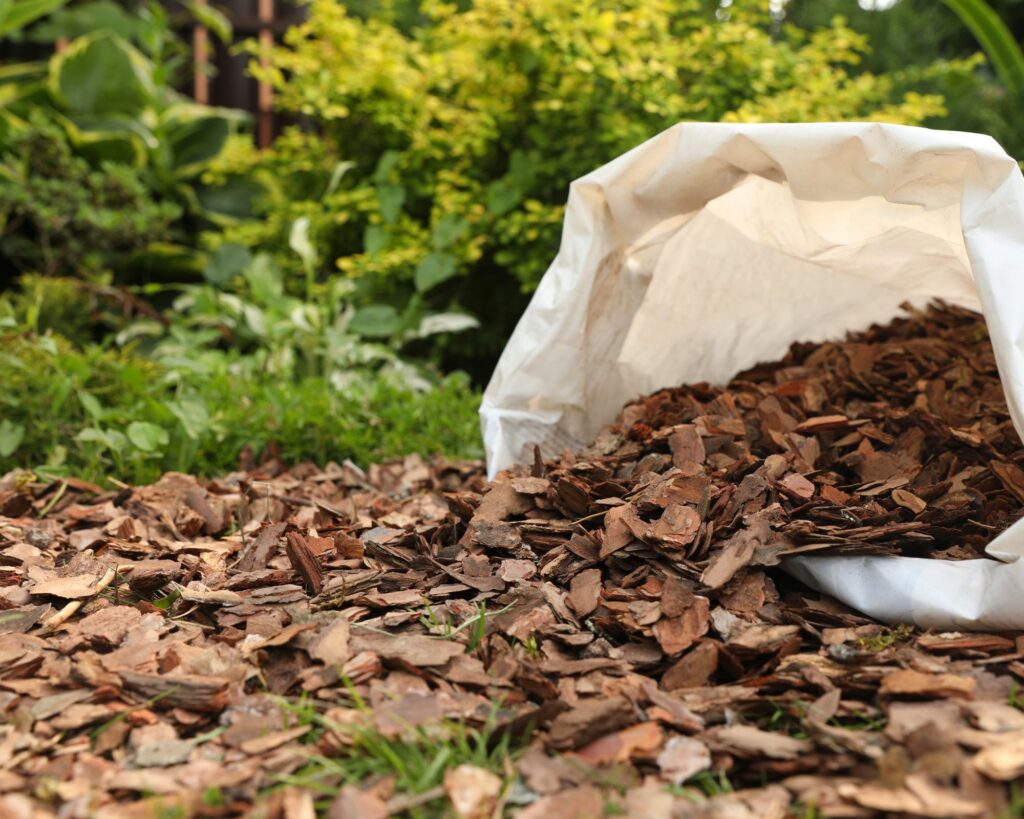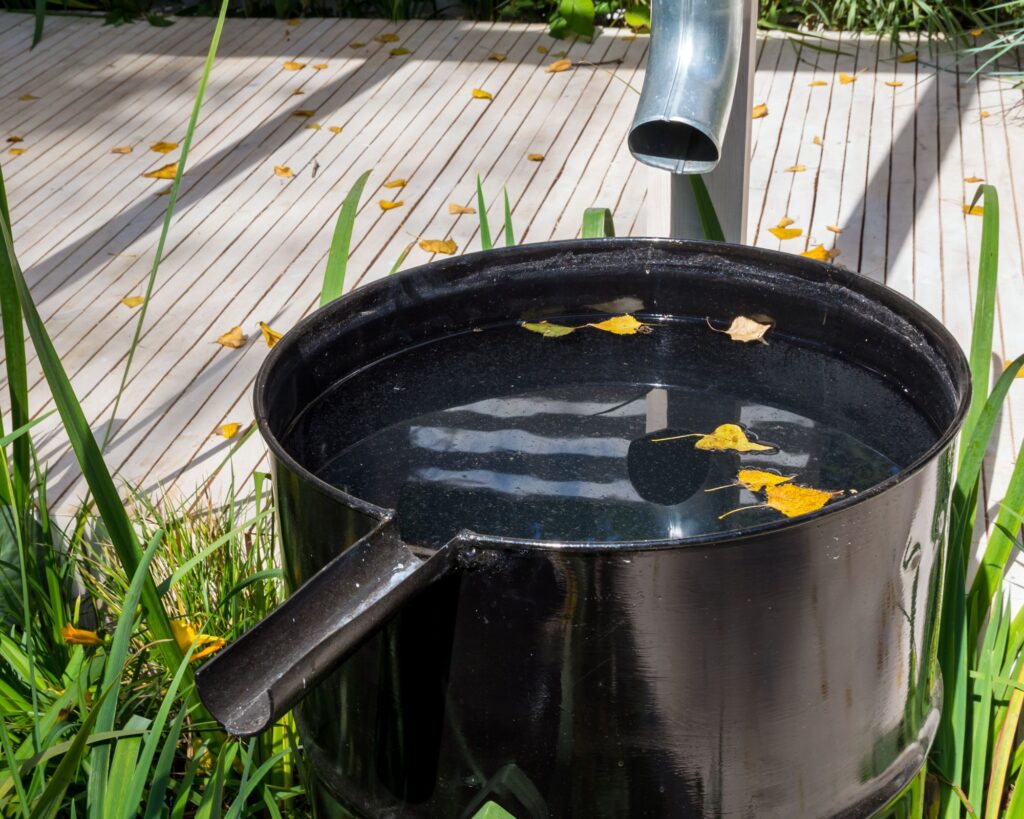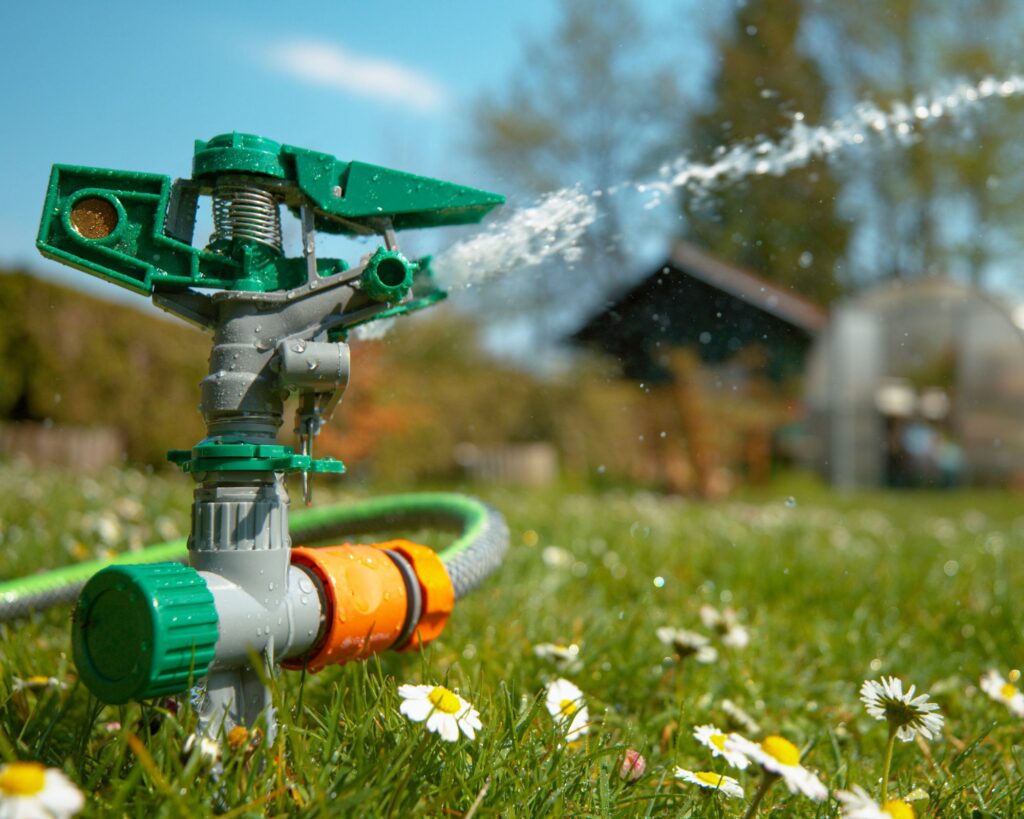Struggling to keep your garden alive during a drought? Don’t worry! With these ingenious water-conservation techniques, your garden can remain a lush sanctuary even in the harshest dry spells.
Envision your garden beds blanketed with natural mulches like straw and wood chips, locking in moisture and cutting down your watering needs. Picture yourself watering in the serene, cool mornings, maximizing water absorption before the sun’s heat kicks in. Imagine a drip irrigation system that delivers water with pinpoint accuracy, ensuring each plant gets its perfect dose. Embrace drought-resistant plants that flourish with minimal water, turning your garden into an oasis of resilience.
Intrigued? Read on to discover how you can achieve this!
Understanding Drought and Water Conservation
Water shortages in your garden often stem from droughts. To manage these conditions and ensure plant health, it’s essential to grasp the basics of drought and the principles of water conservation.
The Basics of Drought
A drought occurs when there is a prolonged period of inadequate rainfall. This can severely impact your garden by reducing the moisture available in the soil.
Drought conditions can lead to wilting plants and reduced crop yields. Identifying early signs, such as dry, cracked soil, can help you take prompt action.
To mitigate the effects of drought, consider soil types, climate patterns, and the specific water needs of your plants. Sandy soils, for example, drain quickly and may need more frequent watering.
Principles of Water Conservation
Water conservation involves using water efficiently to maximize its benefits. One effective technique is mulching, which helps retain soil moisture by reducing evaporation.
Another approach is installing drip irrigation systems, which deliver water directly to plant roots, minimizing waste. Selecting drought-resistant plants can also reduce water usage.
Consider rainwater harvesting to collect and store rain for future use. Using a soil moisture sensor can guide you on when to water, ensuring you avoid overwatering or underwatering your garden.
These strategies can maintain your garden’s health even during periods of limited water supply.
Choosing the Right Plants
Selecting the appropriate plants for your garden can significantly reduce water usage. Focus on choosing species that can thrive in low-water conditions and are well-suited to your local climate.
Drought-Resistant Varieties
Drought-resistant plants are designed to survive with minimal water. Consider succulents such as sedum and agave, which store water in their leaves. Lavender and sage are also excellent choices due to their deep root systems that tap into underground water sources.
These plants often have adaptations like waxy leaves that minimize water loss. Another good option includes ornamental grasses like blue fescue. They are not only resilient but also add visual variety to your garden. Using these varieties can ensure a vibrant garden even during dry spells.
Native Plant Selection
Native plants are naturally adapted to your local climate, making them more efficient in using available water. Look for plants that naturally grow in your region. For example, if you live in the southwestern United States, cacti and yarrow can be great options.
Native plants often have established networks with local soil types and microorganisms, helping them to thrive without excessive watering. This not only conserves water but also supports local wildlife, creating a balanced ecosystem in your garden.
Irrigation Techniques for Saving Water
Implementing efficient irrigation techniques can help you conserve water in your garden during a drought. These methods ensure that your plants receive the necessary hydration without wasting precious resources.
Drip Irrigation Systems
A drip irrigation system delivers water directly to the base of each plant through a network of tubes and emitters. This method reduces water evaporation and runoff, making it highly efficient.
Install emitters close to the plant roots for targeted watering. You can easily adjust the drip rate to match the needs of different plants. This system is particularly beneficial for gardens with a variety of plant species.
Maintenance tip: Regularly check for clogged emitters to ensure consistent water flow.
Timing and Watering Cycles
Watering your garden at the right times can significantly reduce water waste. Opt for early mornings or late evenings when temperatures are cooler and evaporation rates are lower.
Set up an automatic watering schedule with timers to maintain consistency. Watering deeply but less frequently encourages roots to grow deeper, making plants more drought-resistant. Avoid watering during windy conditions, as this can lead to increased evaporation.
Best practice: Monitor soil moisture and adjust the watering schedule based on weather conditions and plant needs.
Mulching to Retain Moisture
Using mulch in your garden can help retain soil moisture, reduce evaporation, and suppress weed growth. Organic mulches like straw, wood chips, or compost are excellent choices.
Apply a 2-3 inch layer of mulch around your plants, ensuring it doesn’t touch the stems to prevent rot. Mulch helps maintain an even soil temperature, which is beneficial during hot weather.
Extra benefit: Mulching also improves soil health as it decomposes, adding valuable organic matter.
Soil Management for Water Retention
Improving soil management can significantly increase water retention in your garden. Key methods include using organic mulches and enhancing soil structure.
Organic Mulches
Using organic mulches is a simple, effective way to retain soil moisture. Mulches like straw, leaves, and wood chips create a protective barrier.
They reduce water evaporation and moderate soil temperatures.
Mulches also help suppress weed growth, reducing competition for water. Over time, as organic mulches decompose, they add valuable nutrients to the soil. Apply a 2-4 inch layer around your plants, keeping it a few inches away from the stems to prevent rot.
Improving Soil Structure
Enhancing your soil’s structure helps it retain water more effectively. Start by adding organic matter such as compost or well-rotted manure.
This improves soil texture, allowing it to hold water while still draining excess moisture. Another method is to practice no-till gardening, which reduces soil compaction.
Avoid walking on garden beds as much as possible, as this can compact the soil and reduce its ability to absorb water. Consider planting cover crops like clover or legumes during off-seasons to further boost soil health and water retention.
Rainwater Harvesting and Usage
Using rainwater can be an effective way to conserve water in your garden during a drought. You can set up rain barrels to collect rainwater and integrate this resource into your existing irrigation system.
Setting Up Rain Barrels
Installing rain barrels allows you to collect and store rainwater from your roof.
- Choose the right barrel: Look for sturdy, food-grade barrels.
- Position near downspouts: Place barrels under downspouts to capture runoff.
- Install a filter: Use a screen or mesh to prevent debris and pests.
- Create an overflow system: Ensure excess water is redirected away from your home’s foundation.
Rain barrels can help reduce water bills and provide a sustainable water source for your garden.
Integrating Rainwater into Irrigation
Incorporating rainwater into your irrigation system enhances water conservation.
- Connect to drip systems: Use rainwater in drip irrigation to target water delivery directly to plant roots.
- Manual watering: Use watering cans for localized dampening.
- Automated systems: Install pumps to distribute water through sprinklers or soaker hoses.
Using rainwater can ensure your plants remain hydrated during dry periods while minimizing reliance on municipal water.
Conserving water in your garden during a drought requires a combination of smart plant selection, efficient watering techniques, and innovative conservation methods. By understanding drought conditions and implementing these practices, you can maintain a thriving garden while significantly reducing water usage.
Remember, every drop counts, and your efforts not only benefit your garden but also contribute to the overall conservation of this precious resource. Happy gardening!
